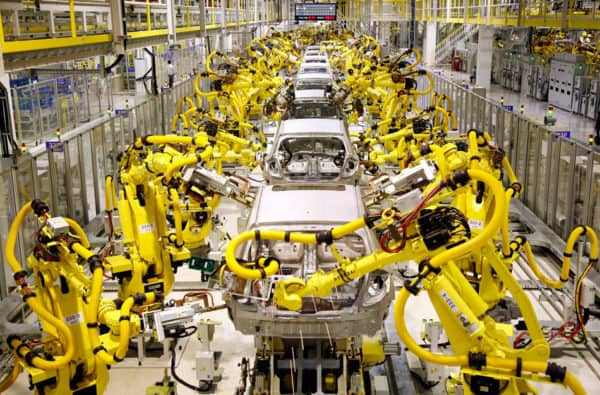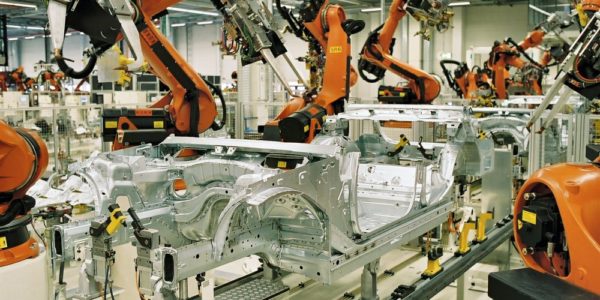
The automotive industry is known for its intensive application of industrial robotics. It is one of the first manufacturing sectors to adopt robotic technology. Robots are used in various capacities of automotive manufacturing which include painting, welding, glue dispensing and so on. The application of robots in automotive manufacturing is presently one of the highly automated supply chains on the planet.
Since the introduction of industrial robots in the early 60s, there have been a rapid change and development in the automotive industry. The production lines have been more productive and flexible. The robotic applications in automotive have enabled manufacturers to match and meet international standards. There are several applications of robots in the industry, and here we want to look at some of the important robotic applications in the automotive manufacturing industry.
Painting and handling
Most automotive manufacturers are now using robots for painting. This is because, apart from being a complex and toxic process, there’s a need for consistency in painting during production. Also, professional and experienced painters are becoming difficult to come by. Considering the size of the vehicle, it’s more reasonable for manufacturing companies to use robots for painting. The use of robots for painting also helps to reduce wastage of materials.
Furthermore, in automotive industries, the assembly lines require efficient, precise and flexible systems. For this purpose, robotic arms are used for handling and sealing in assembly lines.
Human-Robot collaboration
To enhance safety measures and increase productivity, there is a need for both human and robots to work hand in hand. These days, automotive companies are actively using the collaborative effort of human and robots in the manufacturing units for assembly lines. The human-robot collaboration leads to a reduction in the number of personnel in the manufacturing line and increases safety and productivity.
Collaborative robots

In contrast to the human-robot collaboration, collaborative robots are robots the work with other robots. These robots are built for handling and welding operations on enormous manufacturing or assembly lines. They can perform about 4000 welding operations in 86 seconds cycle time on the body of the vehicle. There is an increase in the demand for collaborative robots due to their efficiency and are human-friendly on assembly lines.
Robotic Welding
Over time, welding has been the major robotic application in the automotive industry. Before a car can be completed, many different parts need to join together. There are two types of welding – spot welding or arc welding. Robotic welding can be done either by the movement of the robot or by moving the body parts past the robot. Robotic welding provides unmatched uniformity, repeatability, and speed.
Robotic Vision
The integration of the vision system in car manufacturing robots has aided in the robotic application for handling automation. With the vision sensors (laser and camera) robots can easily locate parts such as a door, panels, windshield or fenders. They are able to see and locate where to carry out the installation on the car body. The robotic vision has helped in the precise installation and reduced the gap between the body parts.
Robotic Assembly of body parts
Robots are used in the automotive industry to assemble different body parts. The wiring system, dash panels, seats, doors, electronic devices, glass, bumper, windshield installation, wheel, battery, etc. can all be installed using robots.
Apart from the above mentioned robotic applications, there are other uses of robots in the automotive manufacturing industry. The robotic application has enabled automotive companies to withstand the new changes and demands in the industry. It has helped them to optimize productivity and enhance safety.
Universal Robots is popularly known for manufacturing robots for different applications in the automotive manufacturing industry.
 Gearfuse Technology, Science, Culture & More
Gearfuse Technology, Science, Culture & More


